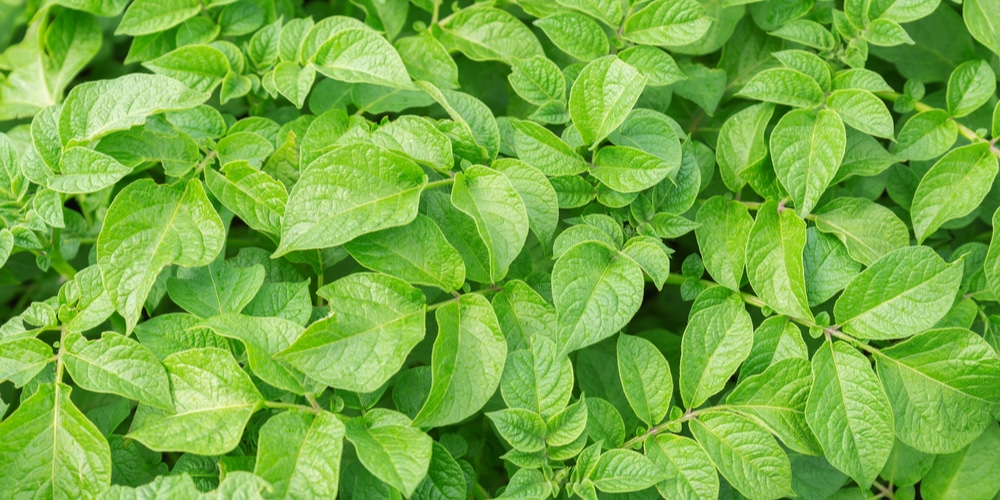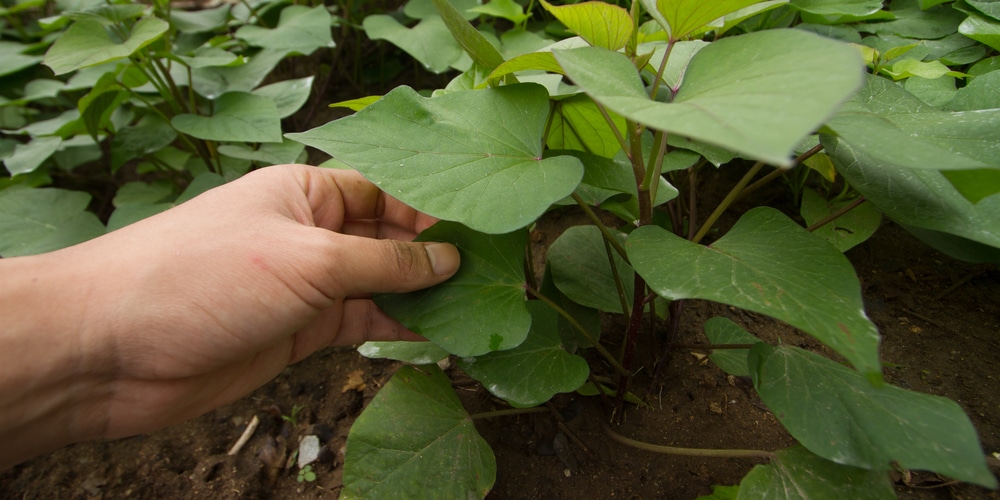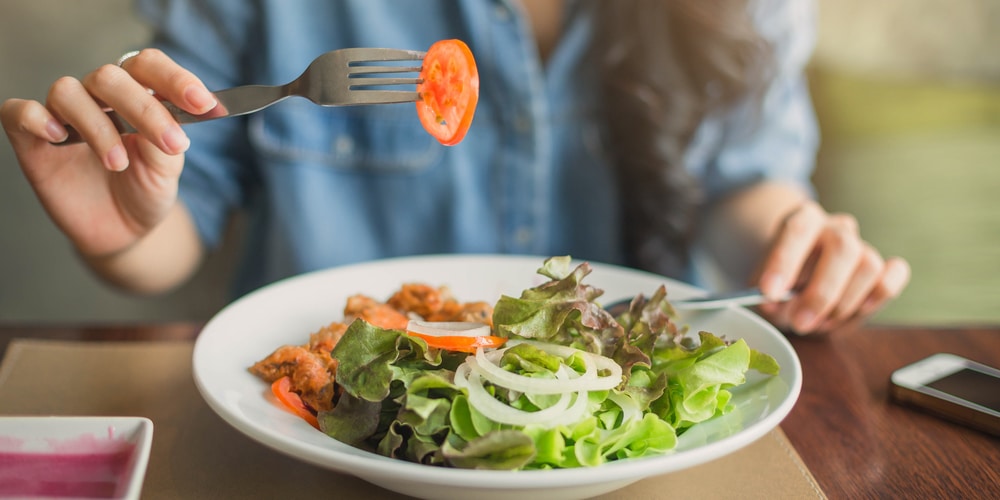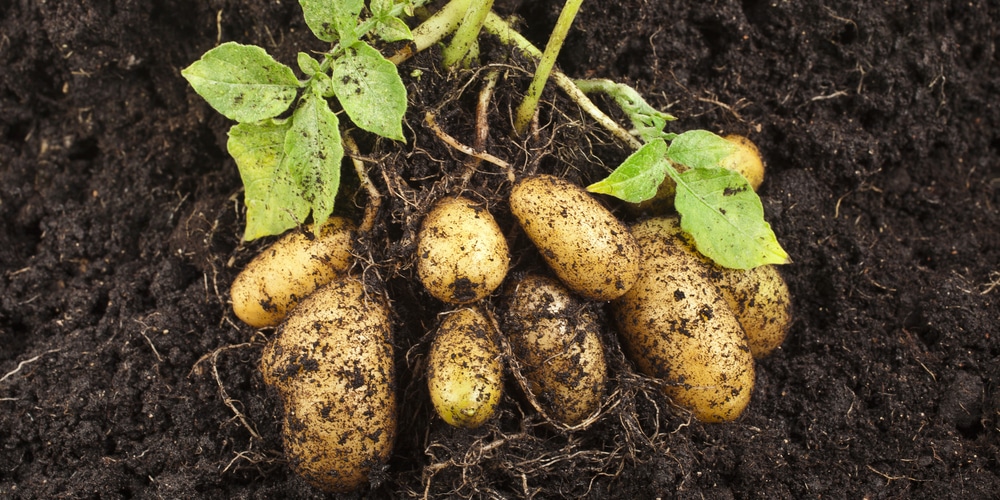Potatoes are a popular tuber vegetable that can be eaten in various ways and are enjoyed worldwide. There are a couple of different potato varieties, and sweet potato leaves can be eaten. However, the leaves of Irish (regular) potatoes are poisonous and may even prove fatal if consumed in large quantities.
Regular and Sweet potatoes can be eaten as part of a hearty and healthy meal. Let’s answer the question, “Can you eat potato leaves?”
Are Potato Leaves Edible?
Irish potatoes belong to a family of plants termed deadly nightshades, while sweet potatoes are part of the morning glory family. Both sweet and Irish potatoes are healthy and provide many essential vitamins and minerals, including Vitamin A, B, C, K, calcium, and iron.
Irish potato leaves aren’t edible; they are toxic to humans, and eating them can result in death. This is because the plant leaves contain a substance known as solanine, which is a protective chemical produced when the leaves are exposed to the sun. The solanine spreads across the plant to protect it from predators.
Solanine is toxic, and if you were to eat potato leaves, you’d likely suffer from symptoms such as nausea and vomiting, abdominal pains, a weak but rapid pulse, and in the worse cases, respiratory failure.
There are minimal quantities or traces of solanine present in potatoes and sometimes appear as green or brown spots on the tuber’s skin. The poisonous qualities of the solanine are lost during the cooking process.
Potatoes are toxic when eaten raw but, after frying or boiling, are safe for human consumption. As leaves contain more solanine as they are exposed to the sun, they are not edible, even if you were to boil them.
Are Sweet Potato Leaves Edible?
As Sweet potatoes don’t belong to the nightshade family, you can eat their leaves which are rich in fiber, iron, and potassium. It’s believed that the leaves of sweet potatoes can be used to treat metabolic issues, skin irritations, and rashes, and insect bites.
Sweet potato leaves have become more popular in recent years as they are straightforward to grow. The leaves can be collected before the tubers have grown. Unlike Irish potatoes, the sweet variety can be grown at any time of year.
Sweet potato leaves can be consumed in a variety of ways. You can either eat sweet potato leaves raw, although these may be too bitter for some people’s tastes. If you decide to eat them raw, it’s best to choose small, young leaves.
You can prepare a salad and add some sweet potato leaves. Alternatively, sweet potato leaves can be boiled, and these have a spinach like taste.
Boiling a sweet potato will remove the bitter taste. You can also make a tea from sweet potato leaves by infusing the leaves, and this is often used to help stimulate the appetite.
Cooking sweet potato leaves may result in vitamin loss, so it may be best to steam the leaves gently. The heat can help to activate nutrients, vitamins, and enzymes.
It’s beneficial to add raw sweet potato leaves to smoothies or juices as this will add vitamins to your drink. As mentioned above, the raw leaves are slightly bitter, but you can offset this by adding a sweet fruit such as apple or banana.
You could try chopping up sweet potato leaves and gently fry them with some garlic and butter. This is an excellent side dish for any meal.
The Health Benefits of Sweet Potato Leaves
Sweet potato leaves are very nutritional and are excellent for health. They can also be used to support weight loss as they are low in calories and contain fiber. Sweet potato leaves are high in Vitamin K, which stops the calcification of hard deposits in the arteries and reduces inflammation in the blood vessels’ cell linings. Vitamin K is also very beneficial for heart health and can help you maintain a healthy heart as you age.
Vitamin K is also beneficial for the bones and can reduce the risk of bone loss and fractures in postmenstrual women. Sweet potato leaves also contain Vitamin A, which can help to improve eyesight and reduces inflammation.
Vitamin A is also good for skin, hair, and nail health and reduces the appearance of fine lines and wrinkles. It can be used to improve concentration and lower the chances of developing a neurodegenerative disease.
The fiber in sweet potato leaves is beneficial to the gastrointestinal tract and is good for constipation.
Growing Potatoes
If you have your own allotment or vegetable patch and are growing potatoes, it’s a good idea to keep an eye on the condition of their leaves. Looking at the leaves will tell you if your yard is likely to have an insect infestation in the near future. You can look for signs such as insect eggs or larvae on the leaves and take action before your yard is infested.
Potatoes are a very forgiving plant to grow. Here’s when to harvest potatoes in most areas.
For example, the Colorado potato beetle will lay eggs on the potato leaves, and larvae can quickly kill a whole patch of potatoes. If you notice any eggs or larvae, you can wipe them off with a damp cloth and dispose of them or use a pesticide to kill the insects. Many species of potatoes have hairs on their leaves to prevent insect infestation.
Conclusion
Whether or not you can eat potato leaves depends on which type of potato leaf you’re talking about. You can eat sweet potato leaves raw or cooked and can add them to smoothies, salads, or stir-fries. Sweet potato leaves are very healthy and are commonly eaten in the developing world, including the Pacific Islands, Asia, and Africa. Sweet potato leaves are known as camel tops in many countries around the world.
Many people in the western world are unaware of the benefits of eating sweet potato leaves. They are not only healthy but are also tasty and can be used as a substitute for potatoes or fattening carbs. Irish potato leaves are toxic and shouldn’t be consumed.



